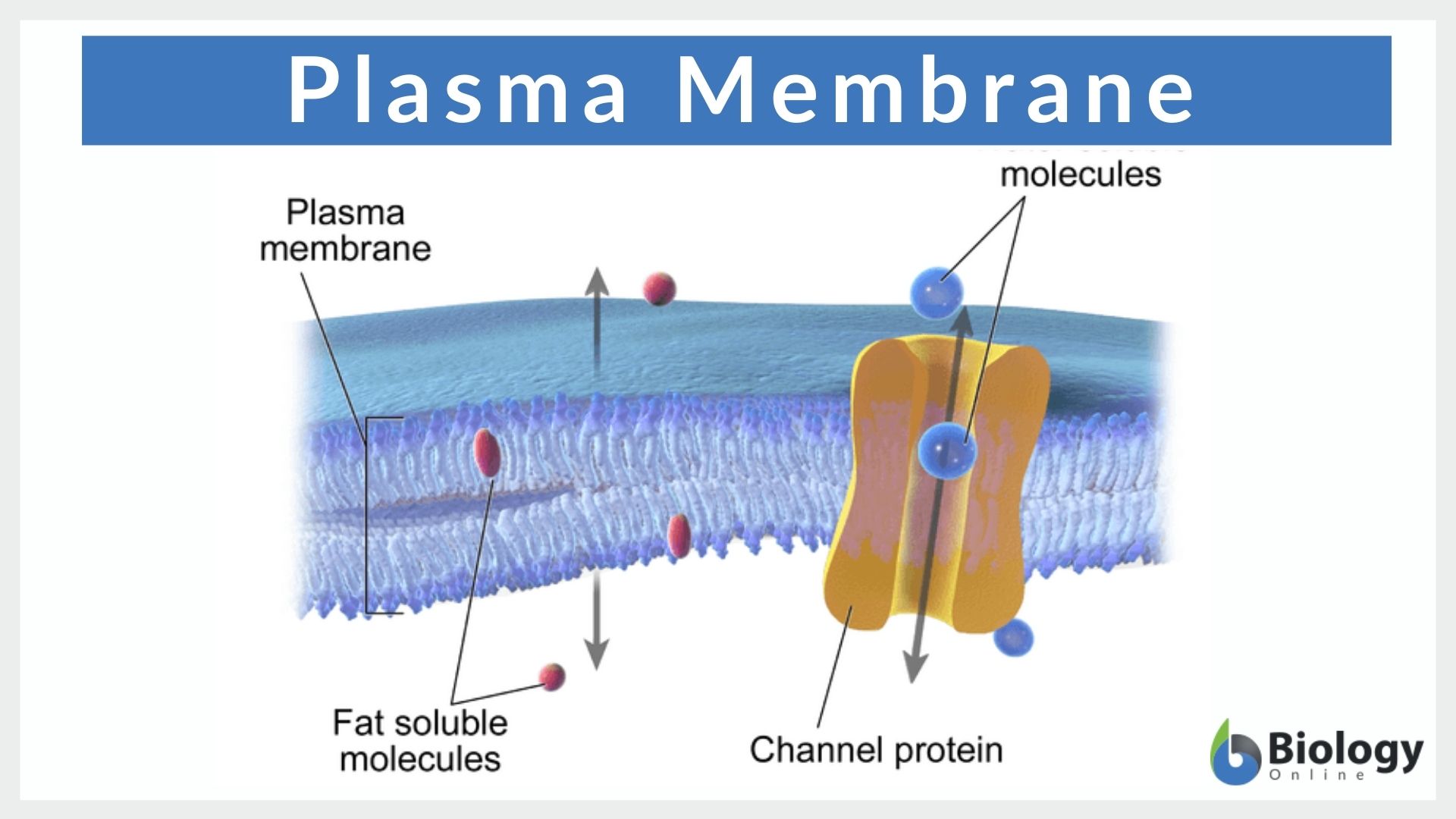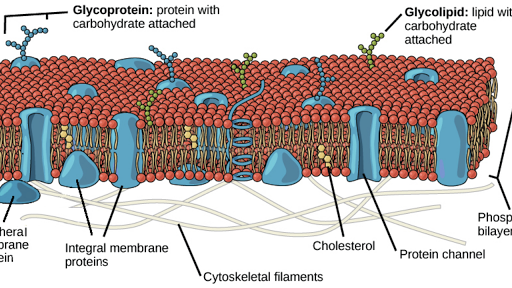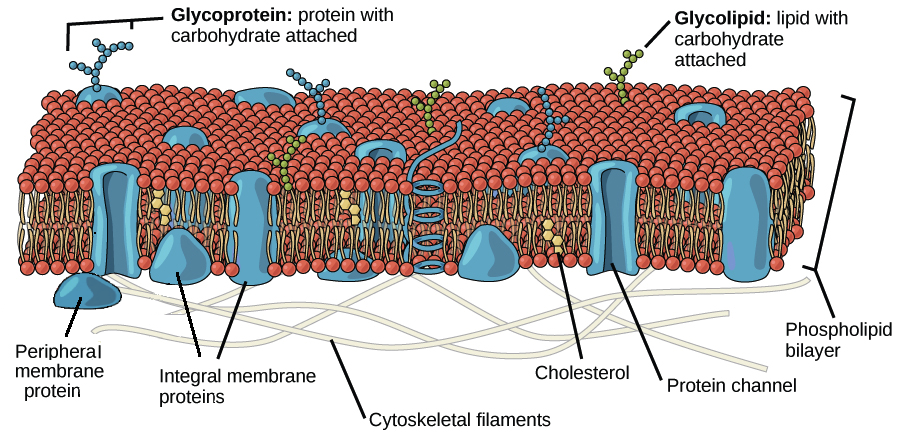Model Used to Describe the Plasma Membrane
The fluid mosaic model of the plasma membrane describes that the plasma membrane is only made of water that has phospholipids that float in it d. Model used to describe the plasma membrane.
What Is Plasma Membrane Chemical Structure Functions Of Cell Membrane
The fluid mosaic model describes the structure of the plasma membrane as a mosaic of components including phospholipids cholesterol proteins and carbohydratesthat gives the membrane a fluid character.

. Concepts of flow and conservation of membrane material are used to pose an equation system which describes the movement of plasma membrane in the tip of growing pollen tubes. The fluid mosaic model of the plasma membrane describes the plasma membrane as a fluid combination of phospholipids cholesterol and proteins. The plasma membrane may be known as a fluid mosaic model where the membrane is a fluid structure with various proteins.
In the fluid-mosaic membrane model 99 100 biological membranes are two-dimensional viscous phospholipid bilayers in which integral membrane proteins are dissolved and free to rotate and diffuse laterally. For example myelin contains 18 protein and 76 lipid. Using heavy metal staining.
By the 1950s cell biologists verified the existence of plasma membranes through the use of electron microscopy which accounted for higher resolutions. James Danielli and Hugh Davson in 1935 have suggested bimolecular leaflet model of cell membrane. Structure Related to Function.
According to this model the plasma membrane is composed of freely moving in a fluid-like manner components phospholipids proteins and cholesterol. Biological implications of the model are also treated. Having a lower concentration of solute than another solution water moves into the cell PO from Kung Fu Panda.
Lipid and Lipid Bilayer Models 2. Nicolson in 1972 to explain the structure of the plasma membrane. The plasma membrane is the most thoroughly studied of all cell membranes and it is largely through investigations of the plasma membrane that our current concepts of membrane structure have evolved.
View the full answer. According to bimolecular model of Danielli and Davson plasma membrane consists of. Protein molecules or their complexes occur in the membrane but not in a continuous layer.
Unit Membrane Model Protein-Lipid Bilayer-Protein 3. Requires no energy from the cell. A mosaic is a picture or pattern produced by arranging together many small colored piecesThe term fluid mosaic model is used to describe the plasma membrane because the cell membrane is embedded with many different proteins and other substances that gives it.
The main fabric of the membrane is composed of amphiphilic or dual-loving phospholipid molecules. Some molecules pass-depending on size. Although this model has undergone several changes over time since it was proposed in 1972 the fluid mosaic model is the model often used to describe the structure of plasma membrane.
Basically he suggested that all cellular membranes share a similar underlying structure the unit membrane. Because proteins and lipid tails are free to move and are not bonded by strong interactions with each other. The plasma membrane is a semi permeable barrier that separates the inside of the cell from the outside environment.
Danielli and Davson model was the first attempt to describe membrane structure in terms of molecules and to relate the structure to biological and chemical properties. The founders are SJ. The plasma membranes of mammalian red blood cells erythrocytes have been particularly useful as a model for studies of membrane structure.
The fluid mosaic model was first proposed by SJ. Its consistency has been. The Fluid-Mosaic-Model describes the structure of the plasma membrane as a mosaic of components that gives the membrane a fluid character.
The fluid mosaic model describes the structure of the plasma membrane as a mosaic of components including phospholipids cholesterol proteins and carbohydratesthat gives the membrane a fluid character. The model describes a phospholipid bilayer that lies between two layers of globular proteins and it. The model used represents blood plasma using the Lattice Boltzmann Method LBM and the RBC membrane using the discrete element.
According to the fluid mosaic model the cell membrane consists of a highly viscous fluid matrix of two layers of phospholipid molecules. The plasma membrane also plays a role in anchoring the cytoskeleton to provide shape to the cell and in attaching to the e. 1 Explain what is meant by fluid mosaic 2 Explain how the plasma membrane fits the structure.
Why is the model used to describe the plasma membrane called the fluid mosaic model. This model to explain the structure of plasma membrane was given by Overton Gorion and Grendel. After obtaining the central equations relations describing the rates of endocytosis and exocytosis are proposed.
Singer and Garth L. David Robertson used this method to propose the unit membrane model. Chemically a biomembrane consists of lipids 20-70 proteins 20-70 carbohydrates 1-5 and water 20.
The fluid mosaic model is a model that scientists use to describe the structure of the plasma membrane. The DavsonDanielli model or paucimolecular model was a model of the plasma membrane of a cell proposed in 1935 by Hugh Davson and James Danielli. Although this model has been very valuable and continues to explain many membrane phenomena recent studies.
The plasma membrane is fluid meaning that the components drift around freely in a lateral way. Fluid Mosaic Model 4. 1 See answer Answer 0.
The Fluid Mosaic Model is used to describe the plasma membrane structure. Answer function of plasma memebrane The primary function of the plasma membrane is to protect the cell from its surroundings. The model has evolved somewhat over time but it still best accounts for the structure and functions of the plasma membrane as we now understand them.
Describe briefly the various ways in which neurons use both plasma membrane proteins and proteins on the endoplasmic reticulum to increase intracellular eqtextCa2 eq. Up to 10 cash back This paper aims to develop a new membrane formulation for the numerical modelling of Stomatocyte Discocytes and Echinocyte RBC morphologies to investigate their deformation and flow behaviour. Plasma membranes range from 5 to 10 nm in thickness.
The plasma membrane is made up of carbohydrates cholesterol proteins and a lipid bilayer or double layer of lipids. Lipid and Lipid Bilayer Model. This means that plasma membrane produces a large amount of water.
The following points highlight the top four historical models of Plasma Membrane. Singer and Garth L. We review their content and use your feedback to keep the quality high.

Plasma Membrane Definition And Examples Biology Online Dictionary


Comments
Post a Comment